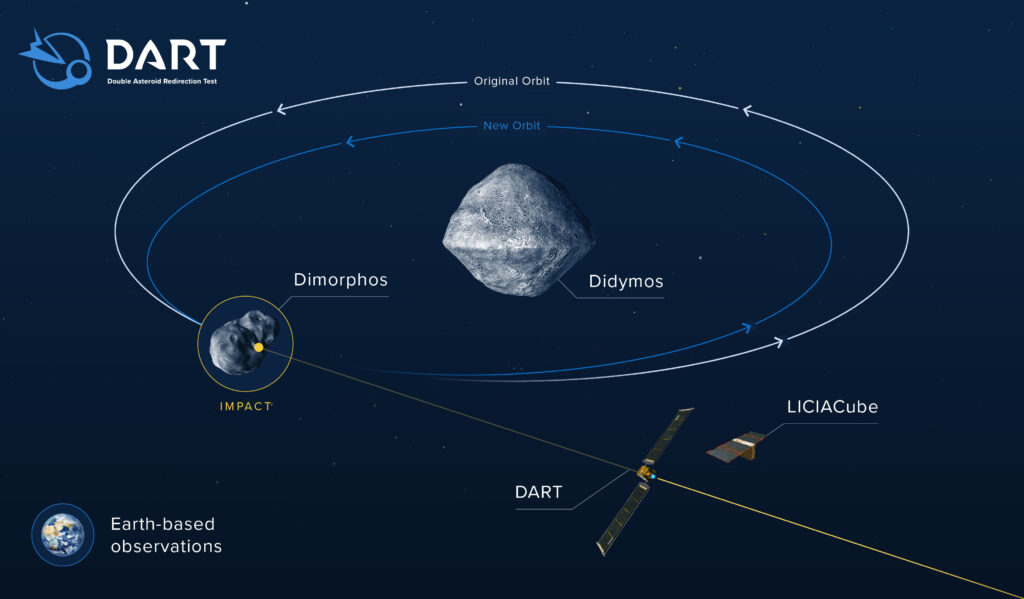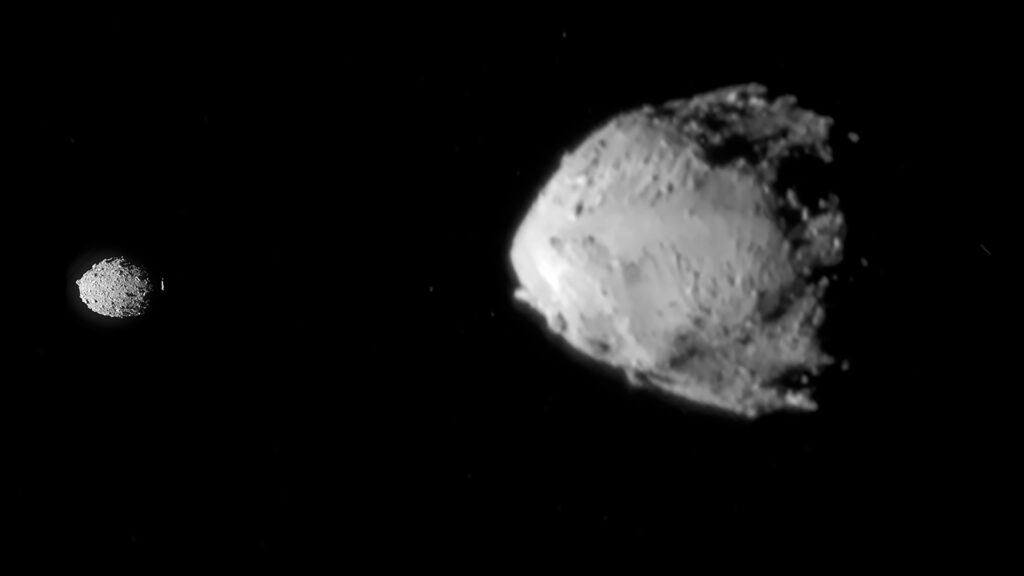Divert the trajectory of an asteroid on a collision course with the Earth, by means of a controlled impact at full speed with a space probe. This was the challenge of the DART mission (Double Asteroid Redirection Test) by NASA, successfully completed on 26 September 2022, in which Politecnico was directly involved as part of the scientific team (read the news here).
The first scientific results on the DART Mission have been published in the authoritative journal Nature in three different articles, co-authored by the researcher Fabio Ferrari from the Department of Aerospace Science and Technology at the Politecnico di Milano.
“DART is a historic moment for space exploration: it is not only the first planetary defence test, but it is also the first time we visit a binary asteroid (a system where two asteroids orbit around a common centre of gravity) and where we have the opportunity to observe how an asteroid can react to an external stress,” explains Fabio Ferrari, co-author of the scientific studies on DART. This has allowed us – and will allow us again in the coming months – to study the structure and evolutionary history of these celestial bodies, so close to us but still barely known. The Politecnico di Milano is part of the scientific team of the DART mission and has contributed to studying the evolutionary dynamics of the Didymos binary system. These include the motion and stability of the binary system, as well as the internal structure of the two asteroids Didymos and Dimorphos. The Politecnico has also played a decisive role in the characterization of the motion of the fragments ejected following the impact, and their morphology observed through orbital and Earth-based telescopes ".

The article describes the successful test of kinetic impact technology on the asteroid Dimorphos. The DART mission was the first to test this technology at full scale, demonstrating that it is an effective technique for planetary defence against possible asteroid threats.
The study describes the observations made using the Hubble Space Telescope on the material ejected by the impact of DART with the asteroid Dimorphos. The observations showed a complex morphology of the ejecta, conditioned by the gravitational interaction between the asteroid and the dust under the influence of solar radiation pressure.
L’articolo – di cui è coautrice anche la professoressa di Meccanica del Volo del Politecnico Michèle Lavagna – contiene la dimostrazione dell’efficacia dell’impatto cinetico di un satellite nell’evitare una potenziale collisione con la Terra. Nell’articolo viene quantificato l’effetto di deflessione prodotto dall’impatto ad alta velocità sull’orbita del sistema binario Didymos, mostrando come l’espulsione dei frammenti generati a seguito dell’impatto abbia contribuito ad aumentare l’efficienza dello scambio di energia tra la sonda e l’asteroide.

“It is the first time that an attempt has been made to divert a celestial body from its natural orbital path in a perceptible and significant way and to measure its effectiveness,” adds Michele Lavagna. And it is above all the first time that the impact has been witnessed by an extremely small satellite, LICIACube, the first European probe to travel in deep space. It played a fundamental role in acquiring images during and after the DART impact: images that helped us to understand the composition and structure of Dimorphos and the dynamics of the binary asteroid system, having recorded the sequence of formation of the fragments post impact and their expansion into the surrounding space in the minutes following the collision by DART. The Politecnico di Milano, together with the Italian National Institute of Astrophysics (INAF), contributed to the design and guidance of this small scientific satellite and is actively involved in the scientific analysis of the images acquired to reconstruct the evolution of the motion of the fragments generated ”.